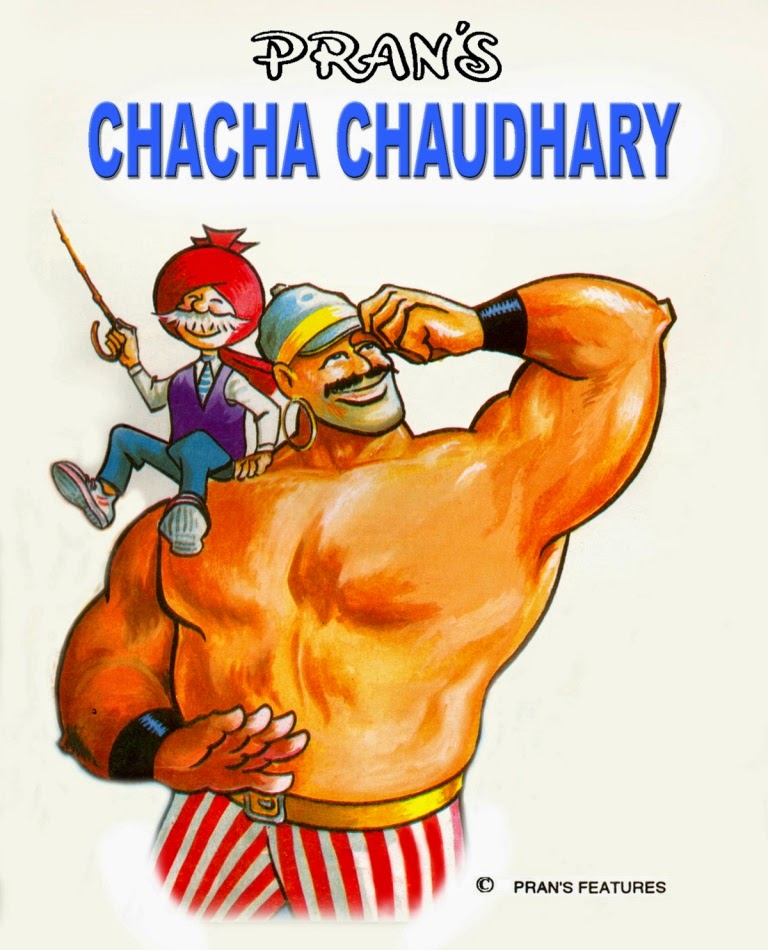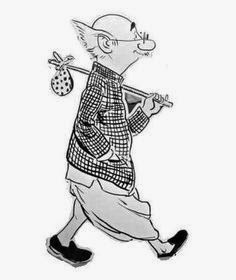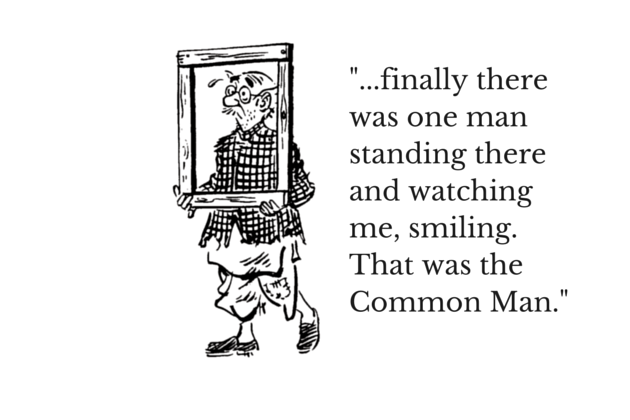This is my first time participating in the A to Z Blogging Challenge and I am so excited!
My blog posts all through April will follow the theme: “My favourite Indian comics/cartoon characters.”
For the letter C, I had tough competition between Chacha Chaudhary and Common Man but I could not leave any one of these out so here I am, presenting to you,
Chacha Chaudhary– A man whose brain works faster than the computer and
Common Man– An average Indian who portrays the hopes, aspirations, troubles and success of the common Indian.
Chacha Chaudhary
 |
| Source |
Chacha Chaudhary was born in 1971 when cartoonist Pran got an idea of a wise old man who solves problems with his sharp intellect. Chacha Chaudhary has since become the most famous comics character of India and continues to entertain thousands even today. Chacha Chaudhary is portrayed as a man whose brain works faster than the computer.
Accompanied by Sabu, his gigantic loyal friend who is also an alien come to earth from planet Jupiter, Chacha Chaudhary’s adventures feature him solving complex problems with a combination of his super fast intelligence and Sabu’s strength. Though they fight criminals and solve serious problems, each episode ends with a touch of humour.
The CHAUDHARY family consists of his wife Binni, a fat sharp tongue woman, Sabu, Rocket – the dog and Dag- Dag, an old truck that is half human- half machine.
I have loved Chacha Chaudhary ever since I could read and I still enjoy reading his comics. Adapted in to TV shows, Chacha Chaudhary is the go-to man if you have a complex problem!
Common Man
 |
| Source |
Common Man is the memorable character created by cartoonist R.K Laxman. He created this character for the Times of India in 1951 where a daily comic strip called “You Said It” was started with the common man in it.
At first, Laxman changed his basic cartoon to represent people from different parts of India but eventually with more closer deadlines, he eliminated his other cartoons and was left with the Common Man.
Common Man is an old man with his glasses askew, his few hairs flying in all directions, wearing a patched dhoti with a check coat. He is shown as a silent spectator to all the changing drama be it political or social. Often portrayed with a confused and helpless and even a dim expression, the Common Man is no fool. He sees everything and understands everything. He represents the average Indian’s hopes, aspirations, troubles and perhaps even foibles.
Laxman’s Common Man cartoons were a sharp satire on the political drama and without being crude, he was able to show everyone that Common Man understood everything. He was no dupe!
 |
| Source |
Laxman said, answering to the question about how his Common Man came to be the symbol of India’s diverse culture:
“He found me, I didn’t find him… he was there. When we got our independence, I had to do a lot of cartoons of Indians, and the common people of this country came to be drawn many times. And the common people are not the same. The Bengali doesn’t look like the Maharashtrian, the Maharashtrian doesn’t look like Rajasthani or Punjabi or South Indian or Keralite. So I had to draw them every time, and… the common man came into the team. I had to draw all of them, which was time-consuming. Each one standing with his arms, (inaudible), scratching his nose, and so on and so forth… it became a hell of a lot of time, but … our journalists have no time at all. I used to draw a crowd. Slowly, I started eliminating them one by one. The Rajasthani went. The Bengali went. This and that went. That fellow went. Finally there was one man standing there and watching me, smiling. That was the Common Man. The striped coat, toothbrush moustache, and black eyebrows, large glasses and big nose.”
 |
| Source |
The above photo shows the many expressions of the Common Man. He is simple, normal, seemingly poor with his patched clothes and askew hair but still is not naive and knows everything.
I loved reading Common Man cartoons. They were sharp observations on many issues that assailed the country at that particular time. Laxman’s cartoons are evergreen and even today, they haven’t lost their impact. You cant read one without getting affected. They leave you thinking, pondering and even enlightened on the issues showed in the cartoon.
Read below an evergreen cartoon by Laxman:
 |
| Source |
———————————————————————————-
Come back tomorrow to checkout my favourite Indian cartoon/comics character whose name starts with D!
You can read my other #AtoZChallenge posts: Click Here
You can read my other #AtoZChallenge posts: Click Here


I was more of a Tinkle comics girl 😀 Your posts are taking me back to those times. Looking forward to reading the rest, Nikita!
Nikita, loving all your posts, they are bringing back such fond memories.
Thanks Ruchi 🙂
Thanks Aathira..:) I, too, enjoyed story books like Tinkle, Champak, Nandan, Chanda Mama etc.
An excellent theme and very good choice for 'C'. We have a stack of comics that simply cannot be thrown away despite everyone having outgrown them (age wise)! Good going on the AtoZ 🙂